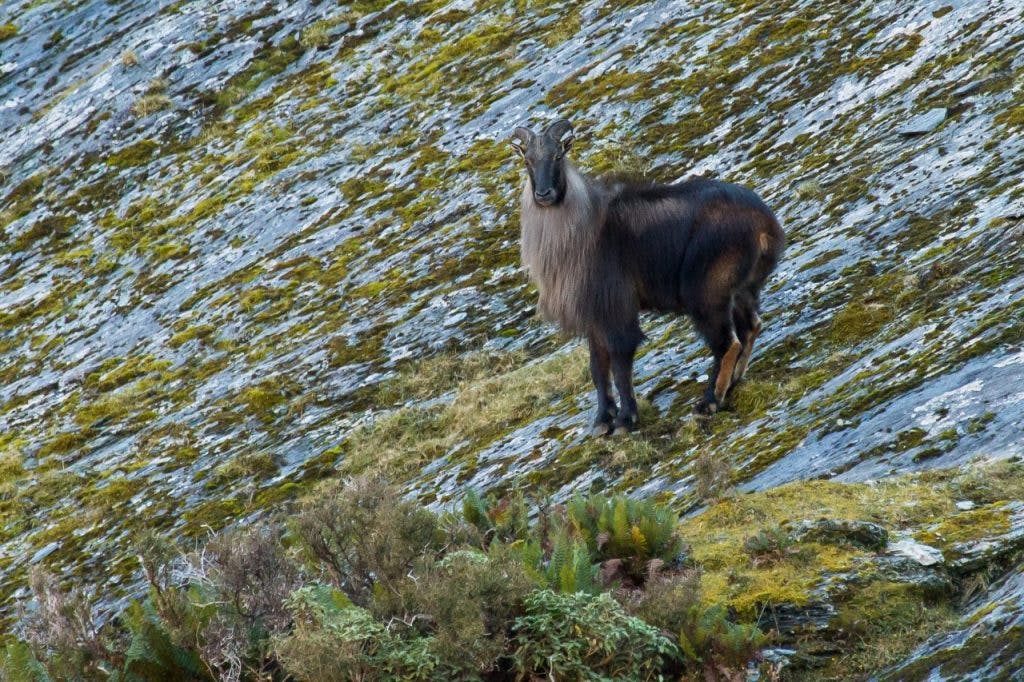DOC has backed down on its proposal to cull 17,000 tahr over the next 10 months after strong opposition from hunters, and has reduced the target by 7000.
A recent survey found the tahr population on conservation land was estimated at 35,000, more than triple the 10,000 animal limit that DOC is required to adhere to under its tahr control plan.
The mountain goats, native to the Himalaya, cause significant damage to alpine plants.
Last month, Conservation Minister Eugenie Sage announced DOC would move to exterminate 17,000 animals by August next year, with the department culling 10,000 and hunters culling 7000.
However, after an outcry from hunting groups, that number has been scaled back to culling 10,000 animals overall, with no target for how many tahr each group is required to kill.
The plan is expected to cost $600,000, double DOC’s annual budget for tahr control.
But it falls well short of the department’s statutory target of keeping the tahr population below 10,000.
It begs the question of why tahr were able to become so widespread without action from the department. Last month, Game Animal Council councillor Geoffrey Kerr and Forest and Bird said it has been the result of years of underfunding.
DOC eastern South Island operations director Andy Roberts said DOC has focused on preventing tahr from spreading beyond their feral range and controlling animals in national parks, which has consumed its entire annual tahr budget of $299,000 a year.
On average, hunters and DOC killed 4600 tahr a year, but it hasn’t been enough due to the high breeding rate, he said.
The lack of funding also meant monitoring work ceased in 2006 and it wasn’t until 2017/18 that monitoring was again carried out and the massive increase in numbers identified.
Federated Mountain Clubs president Peter Wilson said he was concerned tahr have increased to such an extent, but DOC needed to work with hunters to find a solution.
“This is what happens when you underfund conservation,” Wilson said. “The challenge is to find a way through that is supported by all parties. We can’t afford to lose the support of the hunting community and I think reducing the tahr population needs to be done in a staged way. Otherwise, it will set backcountry relations with hunters back by a decade.”
DOC was set to start the control programme this week, however it has been put on hold after two DOC rangers were killed in a helicopter on route to begin tahr control in Haast . It’s first focus is to eradicate tahr from Aoraki/Mt Cook and Westland Tai Poutini national parks.
It has created an online form for hunters to submit their kill figures so they can be more accurately tracked.







